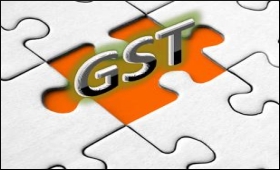|

|
Economic Survey pitches for pan-India GST
|
|

|
|
| Top Stories |
 |
|
|
|
SME Times News Bureau | 28 Feb, 2015
Introduction of the goods and services tax (GST) would make Indian products competitive in domestic and international markets, the Economic Survey of 2014-15 said, adding that studies have shown that it would instantly spur economic growth.
"The introduction of the GST would be a significant step in the field of indirect tax reforms in India. By subsuming a large number of central and state taxes into a single tax, it would mitigate cascading or double taxation in a major way and pave the way for a common national market," the survey said.
The survey was tabled in the Lok Sabha by Finance Minister Arun Jaitley Friday.
"From the consumer's point of view, the biggest advantage would be in terms of a reduction in the overall tax burden on goods, which is currently estimated at 25-30 percent," it said.
The broad features of the proposed GST model are:
** GST would be applicable on supply of goods or services as against the present concept of tax on the manufacture or on sale of goods or on provision of services
** GST would be destination-based tax as against the present concept of origin-based tax
** It would be dual GST with the centre and the states simultaneously levying it on a common base. The GST to be levied by the centre would be called central GST (CGST) and that to be levied by the states would be called state GST (SGST)
** An integrated GST (IGST) would be levied on inter-state supply (including stock transfers) of goods or services. This would be collected by the centre so that the credit chain is not disrupted
** Import of goods or services would be treated as inter-state supplies and would be subject to IGST in addition to the applicable custom duties
** A non-vatable additional tax, not exceeding 1 percent on inter-state supply of goods would be levied by the centre and retained by the originating state at least for a period of two years
** CGST, SGST and IGST would be levied at rates to be recommended by the GST Council, which will be chaired by the union finance minister and will have finance ministers of states as its members
** Exports would be zero-rated
** The list of exempted goods and services would be kept to a minimum and it would be harmonised for the centre and states as far as possible
** GST would apply to all goods and services except alcohol for human consumption
** GST on petroleum products would be applicable from a date to be recommended by the GST Council
|
|
|
| |
|
|
|
|
|
|
|
|
|
|
|
|
|
|
| |
| Customs Exchange Rates |
| Currency |
Import |
Export |
US Dollar
|
66.20
|
64.50 |
UK Pound
|
87.50
|
84.65 |
Euro
|
78.25
|
75.65 |
| Japanese
Yen |
58.85 |
56.85 |
| As on 13 Aug, 2022 |
|
|
| Daily Poll |
 |
 |
| PM Modi's recent US visit to redefine India-US bilateral relations |
|
|
|
|
|
| Commented Stories |
 |
|
|
|
|
|
| |
|